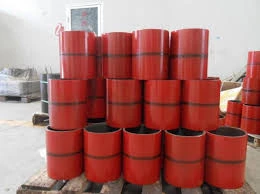- Afrikaans
- Albanian
- Amharic
- Arabic
- Armenian
- Azerbaijani
- Basque
- Belarusian
- Bengali
- Bosnian
- Bulgarian
- Catalan
- Cebuano
- Corsican
- Croatian
- Czech
- Danish
- Dutch
- English
- Esperanto
- Estonian
- Finnish
- French
- Frisian
- Galician
- Georgian
- German
- Greek
- Gujarati
- Haitian Creole
- hausa
- hawaiian
- Hebrew
- Hindi
- Miao
- Hungarian
- Icelandic
- igbo
- Indonesian
- irish
- Italian
- Japanese
- Javanese
- Kannada
- kazakh
- Khmer
- Rwandese
- Korean
- Kurdish
- Kyrgyz
- Lao
- Latin
- Latvian
- Lithuanian
- Luxembourgish
- Macedonian
- Malgashi
- Malay
- Malayalam
- Maltese
- Maori
- Marathi
- Mongolian
- Myanmar
- Nepali
- Norwegian
- Norwegian
- Occitan
- Pashto
- Persian
- Polish
- Portuguese
- Punjabi
- Romanian
- Russian
- Samoan
- Scottish Gaelic
- Serbian
- Sesotho
- Shona
- Sindhi
- Sinhala
- Slovak
- Slovenian
- Somali
- Spanish
- Sundanese
- Swahili
- Swedish
- Tagalog
- Tajik
- Tamil
- Tatar
- Telugu
- Thai
- Turkish
- Turkmen
- Ukrainian
- Urdu
- Uighur
- Uzbek
- Vietnamese
- Welsh
- Bantu
- Yiddish
- Yoruba
- Zulu
Exploring the Functionality and Applications of Pipe Bull Plugs in Industrial Settings
Understanding Pipe Bull Plugs A Functional Overview
In the realm of piping systems, ensuring a tight seal is paramount to maintain the integrity and functionality of various operations, such as water transportation, oil transfer, and gas distribution. One critical component often employed in these systems is the pipe bull plug. This article delves into the design, applications, and benefits of using pipe bull plugs, shedding light on why they are essential fixtures in numerous industrial and commercial contexts.
A pipe bull plug is a type of fitting that serves the purpose of sealing the end of a pipe. Typically, these plugs are characterized by their cylindrical shape and tapering end, which allows them to fit securely within the pipe's opening. Constructed from materials such as brass, stainless steel, plastic, or cast iron, these plugs are suited to various applications depending on the medium being contained—be it liquids, gases, or even solids.
One of the primary uses of pipe bull plugs is in the prevention of fluid leakage. In systems dealing with high-pressure applications, a reliable seal is crucial, and bull plugs provide that level of security. They can effectively handle the stress of different pressure levels, ensuring that the system operates without the risk of spills or contamination. This is particularly vital in industries like oil and gas, where leaks can lead to significant economic losses and environmental hazards.
pipe bull plug

Moreover, pipe bull plugs are instrumental during maintenance and shutdown procedures. When a section of a pipeline needs to be taken offline for repairs or inspection, bull plugs allow operators to seal off that section, preventing the flow of material and ensuring safety. This not only safeguards workers but also minimizes disruptions in the overall operation of the system.
In addition to their sealing capabilities, bull plugs can also serve as an entry point for cleaning, inspection, or testing purposes. By installing a bull plug at the end of a pipeline, professionals can later remove it to access the internal structure of the pipe without needing to disassemble the entire system. This accessibility is invaluable for efficient maintenance routines.
The versatility of pipe bull plugs extends to their various sizes and configurations. Available in an array of diameters to accommodate different pipe sizes, these plugs can be customized as per the requirements of the specific application. This adaptability makes them a popular choice across diverse sectors, including industrial manufacturing, construction, and municipal services.
In conclusion, pipe bull plugs play an indispensable role in piping systems globally. Their primary function of sealing and protecting against leaks, combined with their utility in maintenance and adaptability to various applications, underscores their importance. Whether in oil refineries, water treatment plants, or construction sites, the functionality offered by pipe bull plugs enhances operational safety and efficiency. Understanding their design and applications helps engineers and technicians better manage piping systems, ensuring longevity and reliability in fluid and gas transport operations. Thus, investing in high-quality pipe bull plugs is a crucial step towards achieving seamless and secure piping solutions across industries.
-
Tubing Pup Joints: Essential Components for Oil and Gas OperationsNewsJul.10,2025
-
Pup Joints: Essential Components for Reliable Drilling OperationsNewsJul.10,2025
-
Pipe Couplings: Connecting Your World EfficientlyNewsJul.10,2025
-
Mastering Oilfield Operations with Quality Tubing and CasingNewsJul.10,2025
-
High-Quality Casing Couplings for Every NeedNewsJul.10,2025
-
Boost Your Drilling Efficiency with Premium Crossover Tools & Seating NipplesNewsJul.10,2025







